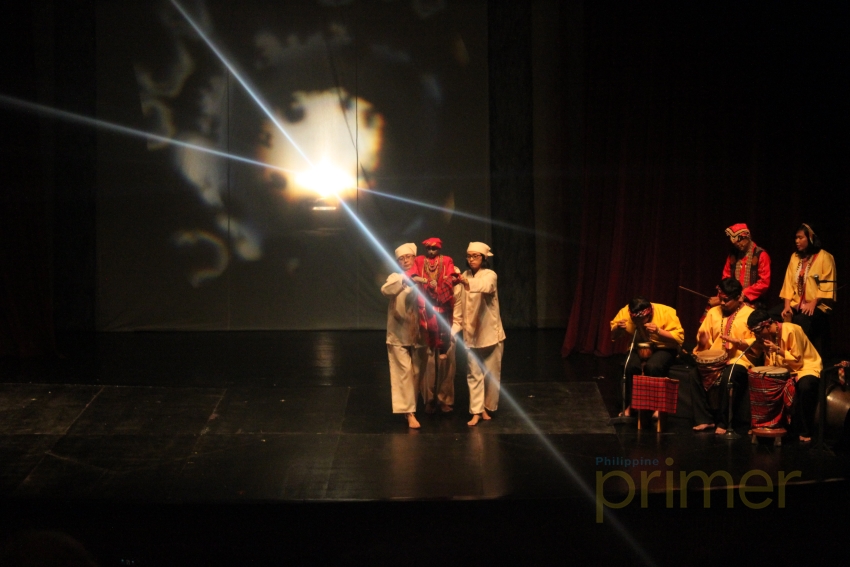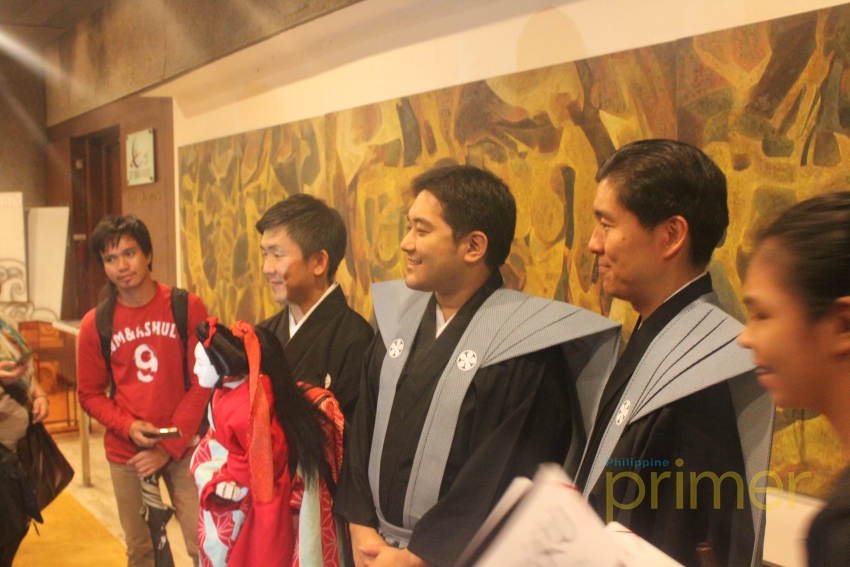The Arts of Puppetry: Philippine Puppetry and Bunraku at PuppetXchange
When people talk about puppets, these conversations usually range from funny ventriloquist acts to Sesame Street’s iconic muppets (mouth puppets). Puppetry in itself is more than just a comedy act, which make events like PuppetXchange all the more important

PuppetXchange: Arts of Puppetry from Japan and the Philippines, held at the Cultural Center of the Philippines’ (CCP) Tanghalang Aurelio Tolentino (CCP Little Theater) showcased two puppetry groups that are both familiar and unfamiliar to audiences: Ningyojoruri Bunrakuza from Japan and Teatrong Mulat ng Pilipinas from the Philippines.
These groups gave audiences a glimpse of a side of puppetry people have yet to discover: an artistic and cultural side that only shows through during cultural events. Last night’s event not only showcased both puppet groups’ best works, they also gave audiences a glimpse into their world with lectures about Philippine Puppetry and a very entertaining introduction to Bunraku.
Philippine Puppetry: Teatrong Mulat ng Pilipinas
Puppetry in the Philippines did not exist until the late 19th century; the closest thing the Philippines had was in the form of shadow play performances called carillo or small cart, the higante (giant), and film actor-director Manuel Conde’s introduction of ventriloquism in the 1940s, but the Philippines itself did not have its own culture or history of puppetry.
This made those who wanted to delve into the world of puppetry start from scratch. Sesame Street, a popular kids program introduced in the 1970s brought with it not just entertainment but also an interest in puppetry. Groups like the Alsa Balutan Puppet Group Inc. (founded in 1976) and Black Theater of Manila (founded as the National Media Production Center in 1978) were inspired by the muppets used in Sesame Street. The Anino Shadow Play Collective (founded in 1992) dabbled in shadow puppetry, while Teatrong Mulat ng Pilipinas (founded in 1977) took on more of a mix.

Teatrong Mulat ng Pilipinas was founded by Prof. Amelia Lapeña-Bonifacio after the successful stating of Abdeja: Ang Ating Sinderela, an adaptation of the Visayan folktale with themes similar to Cinderella, and is one of the pioneer puppetry groups in the Philippines. Mulat now have their own museum – the Amelia Lapeña-Bonifacio Papet Teatro Museo – at Teacher’s Village West in Quezon City which will later house their own theater.
“Mulat” is a Filipino word that means open or to awaken. Taking their cue from this word, Teatrong Mulat gives audiences eye-opening performances that talk about the beauty and richness of Philippine and Asian culture. Their form of puppetry is a mix of Indonesian wayang golek (rod puppetry), wayang kulit (shadow puppetry), and the Japanese Bunraku (two- or three-man teams operating a puppet).
Mulat’s most popular acts include Papet Pasyon (The Passion of Jesus Christ in Puppetry, 1985), Dalawang Bayani (Two Heroes, 1996/2012), and one of their earliest works, Ang Paghuhukom (The Trial Among Animals, 1978), which was presented last night.
Mulat is composed of an 11-man team led by University Professor Emeritus Amelia Lapeña-Bonifacio as artistic director. Their puppeteers include Amihan Bonifacio-Ramolete, Aina Ysable Ramolete, Darwin Desocacido, Raymund Ramolete, and Sigmund Roy Pecho. Chanting for Mulat are Carlito Camahalan and Jessamae Gabon, with musical accompaniment done by Phile Monte, Roel Ramolete, and Jojo Sibal.
A Cultural Heritage unlike any other: the Bunraku
Ningyo Joruri Bunraku ranks among Japan’s foremost stage arts beside Noh and Kabuki. It is a puppet theater that mixes sung narrative, instrumental accompaniment, and puppet drama that was born during the early Edo period (ca. 1600).
Plots are taken from two principal sources: the Jidaimono or historical plays set in feudal times, and Sewamono or contemporary dramas that explore the conflict between affairs of the heart and social obligation.
Of the 700 plays during the Edo period, 160 are still being used in modern performances. Each performance typically lasts for about 2 hours depending on the play.

A ningyo joruri bunraku troupe is usually composed of 3-4 puppeteers, a tayu or narrator, and a shamisen player.
Major characters in a bunraku performance need 3 puppeteers to control one puppet, with the main puppeteer in command of the head and right hand, a puppeteer to control the left hand, and another one for the feet. To be a main puppeteer, one must spend at least 10 years in each of the subordinate positions.
The tayu voices all characters in a single performance, varying his tone and rate of speech to suit different types of characters. The shamisen player holds the largest and heaviest of all the shamizen, a futozao or thick-neck shamisen. The shamisen player acts less like musical accompaniment; his main job is to evoke the different moods and emotions in the drama by how he plays the shamisen.
PuppetXchange is a real treat for theater goers, especially those who have grown weary of repeated performances. It’s also an eye-opening event that looks to give people a small taste of the art of puppetry.
To date, PuppetXchange is a one-night only performance that’s presented by the CCP in cooperation with The Japan Foundation, Manila. Here’s to hoping there will be more of these kinds of cultural shows in the future.













